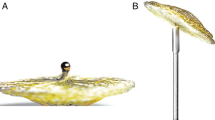Summary
There is a significantly higher incidence of cerebral ischemia among patients with an atrial septal aneurysm and/or a patent foramen ovale. According to the information provided by modern diagnostic procedures – and in particular by transesophageal echocardiography – two pathogenic mechanisms should be considered as possible causes of the cerebral ischemia. Thrombi may develop locally in the left atrium or atrial septal aneurysm and lead to embolization or, alternatively, thrombi from the inflow region of the inferior vena cava may become trapped in the atrial septal aneurysm and pass through the patent foramen ovale to bring about embolization in the arterial bloodstream. Current treatment consists of life-long anticoagulation with cumarin derivatives in order to prevent further neurological complications. With this treatment, however, the risk of producing hemorrhages cannot be regarded as trivial, especially in old people.
Surgical intervention with the insertion of a button device has so far only been attempted in a few isolated cases, and it is in any case no use if there is only an atrial septal aneurysm without a patent foramen ovale.
As an alternative to administering anticoagulants for the rest of the patient's life, we operated on five cases of atrial septal aneurysm with patent foramen ovale followed by the appearance of cerebral ischemia. As with the surgical treatment of atrial septal defects in general, the risk of the operation (or of subsequent complications) is very slight indeed. No such problems arose in any of our patients, no blood transfusions were necessary, and after short postoperative treatment they could all be discharged.
For younger patients with little risk from the treatment itself, we regard surgical intervention in cases of atrial septal aneurysm with a patent foramen ovale and cerebral ischemia as an important therapeutic alternative.
Zusammenfassung
Patienten mit einem Vorhofseptumaneurysma und/oder persistierendem Foramen ovale haben eine deutlich erhöhte Inzidenz für das Auftreten von zerebralen Ischämien. Auf der Basis heutiger diagnostischer Möglichkeiten, insbesondere der transösophagealen Echokardiographie, müssen als Ursache für eine zerebrale Ischämie zwei Pathomechanismen diskutiert werden. Zum einen kann es zu einer lokalen linksatrialen Thrombenbildung am Vorhof oder im Vorhofseptumaneurysma mit Embolisation kommen, zum anderen können sich Thromben aus dem Einstromgebiet der Vena cava inferior im Vorhofseptumaneurysma verfangen und durch das persistierende Foramen ovale in die arterielle Strombahn embolisieren. Die gängige Therapie besteht in der lebenslangen Antikoagulation mit Cumarinderivaten zur Prophylaxe weiterer neurologischer Ereignisse. Diese Therapie beinhaltet jedoch vor allem im Alter eine nicht geringe Blutungskomplikation. Eine interventionelle Therapie in Form eines interventionell zu applizierenden Doppelscheibenschirmchens ist bisher nur vereinzelt erprobt worden und kann beim isolierten Vorhofseptumaneurysma ohne persistierendes Foramen ovale nicht zum Einsatz kommen.
Wir operierten alternativ zur lebenslangen Antikoagulation fünf Patienten mit Vorhofseptumaneurysma und persistierendem Foramen ovale nach zerebralen ischämischen Ereignissen, bei analog zur operativen Behandlung des Vorhofseptumdefektes erwartbar äußerst geringem Operations- sowie Komplikationsrisiko. Alle Patienten zeigten einen komplikationslosen intra- und postoperativen Verlauf, erhielten keine Fremdbluttransfusionen und konnten nach kurzer postoperativer Behandlung aus der herzchirurgischen Behandlung entlassen werden.
Wir halten die chirurgische Therapie als kausale Behandlung des Vorhofseptumaneurysmas mit persistierendem Foramen ovale und zerebraler Ischämie bei jüngeren Patienten mit geringem Behandlungsrisiko für eine wichtige Therapiealternative.
Similar content being viewed by others
Author information
Authors and Affiliations
Additional information
Eingegangen: 14. Oktober 1998, Akzeptiert: 22. Juli 1999
Rights and permissions
About this article
Cite this article
Ochsenfahrt, C., Hemmer, W., Oertel, F. et al. Chirurgische Therapie des Vorhofseptumaneurysmas mit persistierendem Foramen ovale bei Patienten mit zerebralen Ischämien als alternative Therapie zur lebenslangen Antikoagulation – Befunde und operative Strategie bei 5 Patienten. Z Kardiol 88, 941–947 (1999). https://doi.org/10.1007/s003920050372
Issue Date:
DOI: https://doi.org/10.1007/s003920050372




